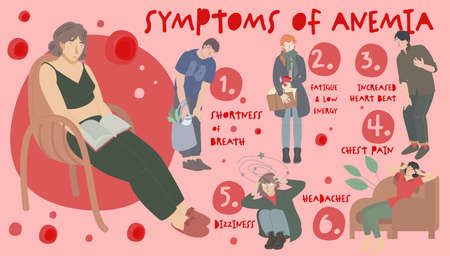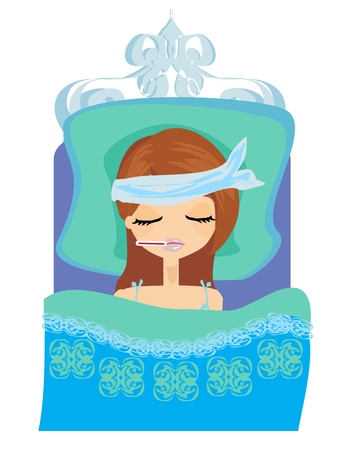Introduction: Understanding Laser Hair Removal in the Indian Context
In recent years, laser hair removal has emerged as one of the most sought-after solutions for long-term hair reduction in India. Traditionally, methods like threading, waxing, and shaving have been the go-to choices for personal grooming across the country. However, with the rapid evolution of beauty standards and growing emphasis on self-care, especially among urban Indian youth, there’s a noticeable shift towards modern and efficient techniques such as laser hair removal. This method uses concentrated beams of light to target and remove unwanted hair, offering a more permanent alternative compared to conventional options. As Indian society becomes more conscious about appearance and personal hygiene—thanks to social media influence, global exposure, and changing lifestyle habits—the demand for advanced grooming services is on the rise. Today, both men and women in metros like Mumbai, Delhi, and Bengaluru are exploring laser treatments not just for aesthetics but also for convenience in their busy routines. The journey of laser hair removal in India is closely tied to these evolving beauty norms and the desire for hassle-free grooming solutions that fit into modern lifestyles.
2. Historical Perceptions of Body Hair in India
India’s relationship with body hair is deeply rooted in its diverse traditions, regional identities, and evolving pop culture. Across centuries, perceptions have shifted dramatically based on religion, climate, gender, and even the influence of Bollywood. Let’s take a closer look at how these factors shape the attitudes toward body hair removal for both men and women.
Traditional Beliefs and Practices
Historically, Indian society associated body hair with purity, spirituality, and social status. In many communities, rituals like haldi (turmeric application) before weddings not only symbolised purification but also acted as a natural hair removal method. For men, keeping a beard or moustache was often linked to masculinity and wisdom, while for women, smooth skin was seen as a sign of youth and beauty. However, these beliefs varied across regions:
| Region/Community | Traditional Attitude (Women) | Traditional Attitude (Men) |
|---|---|---|
| North India | Smoother skin preferred; turmeric & herbal waxing common | Beards valued; moustaches a symbol of pride |
| South India | Natural appearance often accepted; use of oils for skin care | Moustache respected; facial hair denotes maturity |
| Sikh Community | No religious restriction; personal choice varies | Kesh (uncut hair) is a religious mandate |
| Bengal & East India | Smooth arms/legs admired during festivals & marriages | Facial hair styles influenced by poets/artists |
Bollywood’s Influence: The Glamour Effect
The rise of Bollywood in the late 20th century brought new standards of beauty to Indian households. Actresses like Madhuri Dixit and Priyanka Chopra popularized silky-smooth skin as the ultimate ideal for women. Songs and movies began to portray hairless bodies as glamorous and desirable. For men, heroes with well-groomed beards or clean-shaven looks became aspirational figures. Over time, Bollywood’s reach helped normalize modern grooming habits—waxing parlours mushroomed in metros and urban youth started seeking out advanced treatments like laser hair removal.
Cultural Attitudes: Urban vs Rural Perspectives
Cultural attitudes toward body hair can differ widely between urban centres and rural villages:
| Location Type | Women’s Perspective | Men’s Perspective |
|---|---|---|
| Urban (e.g., Mumbai, Delhi) | Lesser body hair preferred; more openness to cosmetic treatments like laser hair removal | Younger generations opt for trimmed/shaped beards; grooming salons popular |
| Rural Areas (e.g., Uttar Pradesh Villages) | Naturally occurring body hair more accepted; traditional methods still used if at all | Moustaches/beards seen as traditional symbols; less focus on cosmetic removal |
A Growing Awareness Across Communities
With increased media exposure and access to global trends via social media, young Indians from all walks of life are questioning old taboos about body hair. While some still cherish age-old practices tied to identity and faith, others are enthusiastically embracing new solutions like laser hair removal for convenience and self-confidence. This rich tapestry of beliefs continues to evolve—and sets the stage for understanding the current awareness levels about laser treatments in India.

3. From Ancient Remedies to Modern Technology
When we talk about hair removal in India, it’s fascinating to see how our traditions blend with new science. Long before laser clinics started popping up in Mumbai or Delhi, Indian households had their own trusted methods. Ask your grandmother, and she’ll tell you about ubtan—a herbal paste made of besan (gram flour), turmeric (haldi), sandalwood, and sometimes milk or rose water. Not only did ubtan help remove unwanted hair, but it also left the skin glowing and fragrant. Haldi itself is known in every Indian home as a magic ingredient—not just for cooking but also for skin care, helping slow down hair growth and keep infections away.
Then there’s the good old waxing. While modern salons may use readymade wax strips, earlier generations relied on homemade sugar waxes or honey mixtures—messy but effective! Threading is another age-old technique that’s still a favourite for eyebrows and facial hair, especially at local parlours from Kolkata to Kochi.
But as urban lifestyles changed and exposure to global trends increased, India slowly began embracing advanced solutions. Laser hair removal entered the scene as a game-changer—especially for those looking for long-term results without the regular hassle of waxing or shaving. At first, lasers seemed like a luxury reserved for celebrities or the ultra-rich. Today, however, thanks to more affordable technology and better awareness, even middle-class families in cities like Bangalore and Pune are considering laser treatments.
What’s interesting is that while many Indians are open to trying lasers, they often combine them with traditional remedies. For instance, someone might use haldi after a laser session to soothe the skin—a true example of East meeting West! In this way, India’s journey from ancient ubtan bowls to high-tech laser machines shows how we’re always adapting, blending wisdom from the past with innovations from the present.
4. Awareness and Adoption of Laser Hair Removal
In recent years, laser hair removal has become a buzzword across India—not just in the glitzy streets of Mumbai and Delhi, but also in tier 2 and 3 cities like Pune, Lucknow, and Coimbatore. The shift is not accidental; its a reflection of changing mindsets, better access to information, and evolving beauty standards.
Why Is Laser Hair Removal Gaining Popularity?
The rising popularity of laser hair removal can be linked to several key factors that resonate with the Indian audience:
| Factor | Impact on Awareness & Adoption |
|---|---|
| Social Media Trends | Instagram reels, YouTube tutorials, and influencer vlogs have brought laser hair removal into everyday conversation. Indians are seeing real-life results, honest reviews, and before-after transformations that demystify the process. |
| Celebrity Endorsements | Bollywood stars and TV personalities openly talk about their grooming routines, normalizing advanced treatments like lasers. When Priyanka Chopra or Deepika Padukone mention skin care secrets, millions listen! |
| Affordable Clinic Options | The number of dermatology clinics offering competitive pricing has grown rapidly. Many now offer EMI (Easy Monthly Installments), making treatments accessible even to college students and working professionals in smaller towns. |
| Cultural Shift | A younger generation is more open about self-care and body positivity. They see laser hair removal as an investment in confidence rather than a luxury. |
Urban Metros vs Tier 2 & 3 Cities: The Changing Scene
While Mumbai and Delhi were early adopters due to global exposure and higher disposable incomes, awareness campaigns and aggressive marketing by local clinics have helped bridge the gap. Cities like Jaipur, Indore, Bhubaneswar, and Surat now see regular demand for consultations. Word-of-mouth from satisfied clients—often shared in regional languages over WhatsApp groups—has also played a huge role.
The Role of Local Influencers & Language Content
An interesting trend is the emergence of regional influencers who explain procedures in Hindi, Tamil, Bengali, and more. This localized approach builds trust among first-time users who may not relate to English-only content or international celebrities.
Overall, laser hair removal is no longer just an urban elite fad. It’s becoming a mainstream choice for men and women seeking long-term solutions—fueled by relatable success stories, affordable options, and a healthy dose of desi curiosity.
5. Common Myths & Concerns Among Indians
Is Laser Hair Removal Suitable for Indian Skin Tones?
This is one of the most asked questions in India. Many people believe that laser hair removal doesn’t work well on Indian skin, especially because of our melanin-rich and varied skin tones. But with today’s advanced laser technology, like Nd:YAG lasers, it’s possible to safely and effectively treat darker and deeper Indian complexions. Clinics in Mumbai, Delhi, Bangalore, and other cities now use machines specifically designed for Indian skin types.
Concerns About Safety
Safety is a top priority for Indian families—no one wants unnecessary side effects or complications! Many Indians worry about burns, pigmentation, or long-term damage. When done by certified dermatologists using FDA-approved lasers, the treatment is very safe. In fact, it’s important to choose clinics with trained staff who understand Indian hair and skin characteristics.
Affordability: Is It Only for the Elite?
There’s a common perception that laser hair removal is only for Bollywood celebrities or the super-rich. However, prices have become more reasonable over the years. With growing competition among clinics and newer technologies, even college students and young professionals can consider it as an investment in their grooming routine.
Pain Factor: How Much Does It Hurt?
Indian mothers love to ask this question! Most people imagine laser treatments are extremely painful. The reality? Modern machines have cooling devices and numbing creams that make each pulse feel like a mild snap—a lot less painful than waxing or threading (which we all know too well!).
Cultural & Religious Perceptions
Some families might wonder if laser hair removal goes against cultural or religious beliefs around body hair. While traditional thinking values natural beauty, more young Indians—both men and women—are openly discussing personal grooming choices at home and on social media. Talking honestly about motivations and respecting each person’s decision helps bridge any generation gap on this topic.
6. Looking Ahead: The Future of Laser Hair Removal in India
As we look towards the future, laser hair removal is set to become a mainstream grooming choice across India. The adoption rate is expected to rise steadily, especially in metropolitan cities like Mumbai, Delhi, and Bangalore, where exposure to global trends and lifestyle choices is higher. Thanks to social media influencers and Bollywood celebrities openly discussing their experiences, the treatment is quickly becoming normalized among young Indians, both men and women.
Adoption Rates and Changing Mindsets
Traditionally, many Indians relied on home remedies or conventional methods like waxing and threading. However, as awareness increases about the long-term benefits of laser hair removal—such as reduced ingrown hairs and smoother skin—more people are willing to invest in this technology. Even in Tier 2 and Tier 3 cities, clinics offering laser treatments are popping up, making it accessible beyond just the urban elite.
Evolving Technology for Indian Skin & Hair
One of the biggest advancements driving adoption is the evolution of technology tailored for Indian skin tones and hair types. Earlier lasers weren’t always effective or safe for darker skin; however, with innovations like Nd:YAG lasers and diode technologies, treatments have become safer and more effective for the diverse Indian population. These advancements mean fewer side effects like pigmentation issues and better results for coarse or thick hair typical among Indians.
The Influence of Pop Culture
Pop culture plays a massive role in normalizing laser hair removal. From reality TV stars to Bollywood icons sharing their personal grooming routines online, there’s less stigma attached to opting for professional treatments. It’s not uncommon now for groups of friends to discuss their clinic visits over chai or even gift each other sessions during weddings or festivals—what was once a hush-hush topic is now part of everyday conversation.
The Role of Awareness Campaigns
Awareness campaigns by dermatologists, beauty bloggers, and even government health initiatives are crucial in dispelling myths about safety and effectiveness. Educational drives in regional languages help reach a wider audience, empowering people with correct information about what to expect from laser hair removal. This push for transparency encourages more Indians to choose certified professionals over unverified salons, ensuring safer experiences all around.
In summary, the future of laser hair removal in India looks promising. With technology evolving rapidly, cultural acceptance growing through pop culture references, and ongoing awareness efforts breaking down barriers, it won’t be long before laser hair removal becomes as commonplace as threading or waxing across all corners of India.


